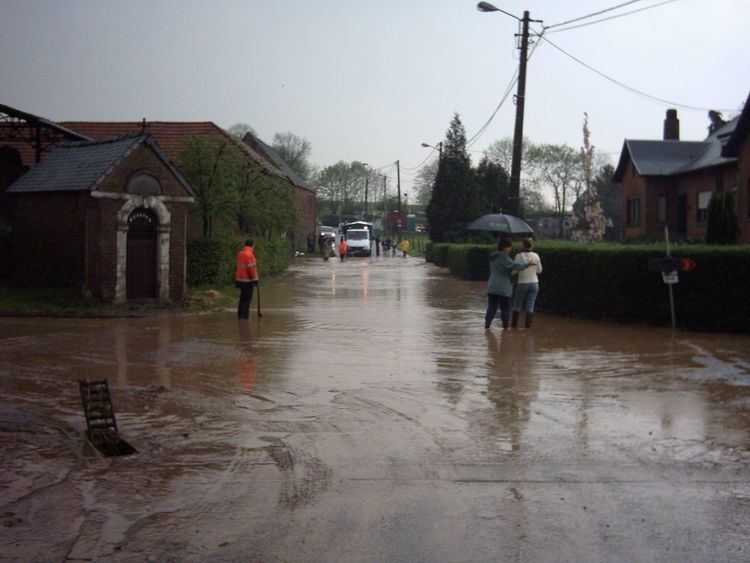 | ||
A muddy flood is produced by an accumulation of run-off over agricultural land . Sediments are picked up by the run-off and carried as suspended matter or bed-load. Muddy floods are typically a hill-slope process, and should not be confused with mudflows produced by mass movements.
Contents
Muddy floods can damage the road infrastructure and may deposit layers of mud blanket and may also clog sewers and damage private property.
It has been referred to 'muddy floods' since the 1980s. A similar designation appeared in French ('inondations boueuses') during the same period.
Muddy flood generation
Muddy runoff is generated on agricultural land when the soil surface is exposed or sparsely covered by vegetation. Large quantities of run-off usually generated by heavy storms is needed to start such a flood.
Muddy flood occurrence
Muddy floods have been observed in the entire European loess belt. Other affected areas include Normandy and Picardy (France), central Belgium and southern Limburg, the Netherlands.
Muddy floods have also been observed in Slovakia and Poland.
Temporal evolution
An increase in muddy flood frequency has been observed during the last twenty years (e.g. in central Belgium,). This increase in their frequency may be due to a number of factors including:
Control measures
Preventive measures consist in limiting runoff generation and sediment production at the source. Alternative farming practices (e.g. reduced tillage) to increase runoff infiltration and limit erosion in their fields may assist.
Curative measures generally consist in installing retention ponds at the boundary between cropland and inhabited areas.
An alternative is to apply other measures than can be referred to as intermediate measures. Grass buffer strips along or within fields, a grassed waterway (in the thalwegs of dry valleys) or earthen dams are good examples of this type of measures. They act as a buffer within landscape, retaining runoff temporarily and trapping sediments.
Implementation of these measures is best coordinated at the catchment scale.
